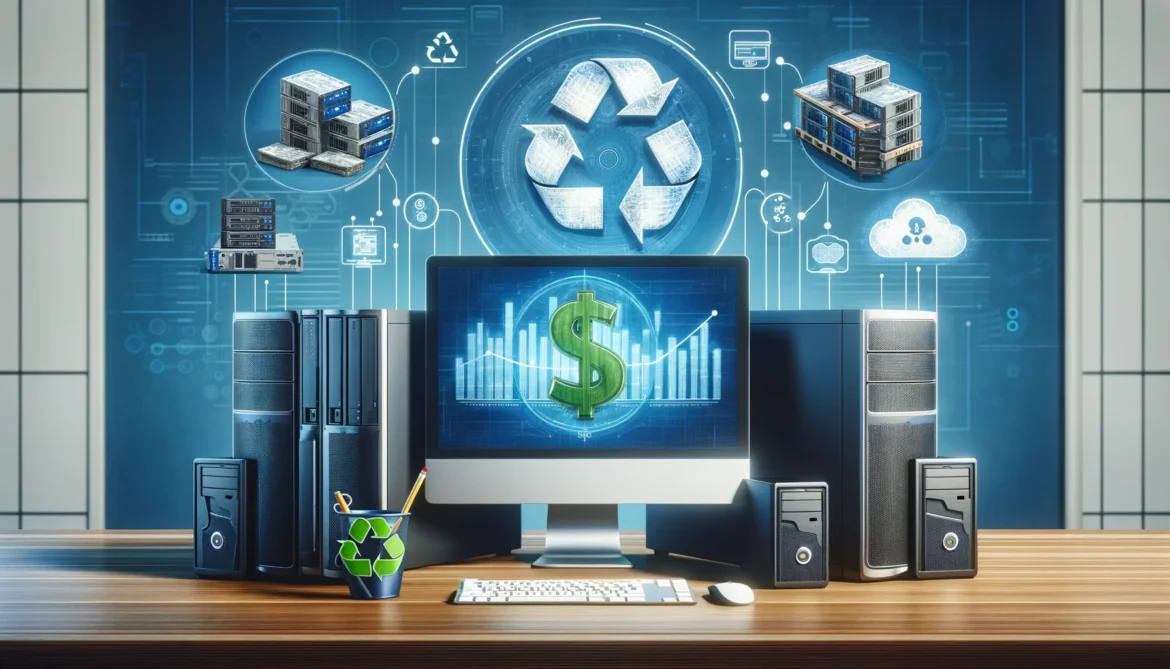Table of Contents
In today’s fast-paced technology world, businesses and individuals are constantly looking for ways to keep up with the latest advancements without breaking the bank. One effective solution that has gained popularity is using refurbished hardware. This term might bring up images of outdated or inferior products, but the reality is quite different. Refurbished hardware offers a range of benefits that make it a smart choice for many.
Understanding refurbished technology
So, what exactly is refurbished hardware? Simply put, it refers to pre-owned devices that have been restored to a like-new condition. This process typically involves thorough testing, repairs and quality assurance checks. Unlike used hardware, which may be sold as-is, refurbished items have been vetted to guarantee they meet specific performance standards. This distinction is crucial because it means buyers can expect reliable performance without the high costs associated with brand-new equipment.
The refurbishment process often includes cosmetic improvements, such as replacing worn or damaged parts, cleaning, and repainting the devices. This means that refurbished hardware not only functions like new but also looks the part. Many suppliers grade their refurbished products based on cosmetic condition, allowing buyers to choose the appearance that best suits their needs and budget.
Environmental impact of refurbishing
One of the biggest advantages of choosing refurbished hardware is its positive impact on the environment. Electronic waste is a growing problem, and extending the life of IT equipment helps reduce this burden. By opting for refurbished products, you contribute to lowering the demand for new resources and decreasing energy consumption associated with manufacturing new devices. This makes refurbishing an excellent choice for businesses committed to sustainability and responsible consumption.
Refurbishing also helps conserve valuable raw materials, such as rare earth metals, that are used in the production of new hardware. By extending the life of existing devices, we reduce the need for mining and processing these finite resources. This not only benefits the environment but also contributes to a more sustainable and resilient supply chain for the IT industry.
Cost-effectiveness
Budget considerations are always top of mind when making IT purchases. Refurbished hardware often comes at a significantly lower cost compared to new equipment, making it an attractive option for small to medium enterprises (SMEs) and startups with limited budgets. These savings can be redirected to other essential business needs, allowing companies to maximise their investments. Furthermore, despite the lower price tag, refurbished items often deliver comparable performance and reliability.
The cost savings associated with refurbished hardware can be especially significant when purchasing in bulk. Many suppliers offer additional discounts for larger orders, making it an attractive option for businesses looking to outfit entire departments or upgrade multiple systems at once. These savings can add up quickly, allowing organisations to allocate resources more effectively and invest in other areas of growth.
Performance and reliability
A common misconception about refurbished hardware is that it’s less reliable than new products. However, many refurbished items undergo stringent testing and quality control processes to confirm they meet or exceed industry standards. Real-world examples abound of companies successfully integrating refurbished servers and networking equipment into their operations with no drop in performance. In fact, well-maintained refurbished hardware can last just as long as new devices if properly cared for.
In some cases, refurbished hardware may even outperform newer models. This is because refurbished devices often undergo more rigorous testing and quality control than their brand-new counterparts. Any potential issues or defects are identified and resolved before the product is sold, resulting in a more reliable and stable piece of equipment. This attention to detail ensures that buyers receive a product that meets or exceeds their performance expectations.
Choosing the right hardware
When considering refurbished hardware, it’s important to pay attention to a few key factors to ensure you’re getting the best value. First, consider the reputation of the brand and supplier. Major brands like IBM, Dell, HP and others offer high-quality products that are built to last. Additionally, check for warranties and support options provided by the supplier. A good warranty can offer peace of mind and protection against potential issues.
It’s also wise to consider the specific needs of your business when selecting refurbished hardware. Factors such as processing power, storage capacity and compatibility with existing systems should be carefully evaluated. Working with a knowledgeable supplier can help you navigate these decisions and find the best solutions for your unique requirements. They can provide expert guidance and recommendations based on your budget, performance needs and long-term goals.
Security and compliance
Security concerns often arise when discussing refurbished equipment. It’s essential to address these by ensuring that all data from previous owners has been completely wiped and that any necessary updates or patches have been applied. Compliance with data privacy regulations is also critical; make sure your supplier follows best practices in this regard. With proper measures in place, refurbished hardware can be just as secure as new products.
Another important aspect of security when using refurbished hardware is ensuring that all firmware and software are up-to-date. Reputable refurbishers will install the latest operating systems and apply any necessary security patches before selling the equipment. This proactive approach helps protect against potential vulnerabilities and ensures that your refurbished devices are as secure as possible from the moment they are deployed in your organisation.
Global availability and delivery
The wide reach of suppliers like Renewtech means you can source high-quality refurbished hardware from anywhere in the world. Fast delivery options across Europe and beyond ensure you get your equipment promptly, minimising downtime and keeping your operations running smoothly. This international availability makes it easier than ever to find the right components for your IT needs without being constrained by geographic limitations.
The global availability of refurbished hardware also presents opportunities for businesses to standardise their IT infrastructure across multiple locations. By sourcing equipment from a single supplier, organisations can ensure consistency and compatibility, even when deploying systems in different countries or continents. This streamlines management and maintenance, reducing the complexity and costs associated with supporting a diverse IT environment.
Integration with existing IT infrastructure
Incorporating refurbished hardware into your existing IT setup can be straightforward if done correctly. Compatibility should be a primary consideration; confirm that any new components will work seamlessly with your current systems. Expert support from suppliers can be invaluable during this process, helping you overcome potential challenges and ensuring a smooth transition.
When integrating refurbished hardware, it’s also essential to consider scalability and future growth. Choosing components that can accommodate increasing demands and adapt to changing business needs is crucial for long-term success. Refurbished equipment that offers flexibility and room for expansion can help you avoid costly replacements down the line and ensure your IT infrastructure evolves alongside your organisation.
Future trends in refurbishing
The market for refurbished hardware continues to evolve alongside technological advancements. As emerging technologies like AI and IoT become more prevalent, there will be increasing opportunities for refurbishing related equipment. Additionally, more businesses are likely to adopt sustainable IT practices, further driving demand for high-quality refurbished products. Staying informed about these trends can help you make strategic decisions about your IT investments moving forward.
In conclusion, opting for refurbished hardware offers numerous benefits ranging from cost savings to environmental impact. By understanding what refurbishment entails and carefully selecting your suppliers and products, you can enjoy reliable performance while supporting sustainable practices in the tech industry.









